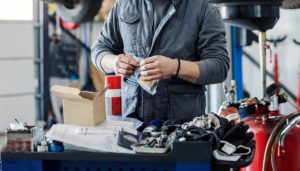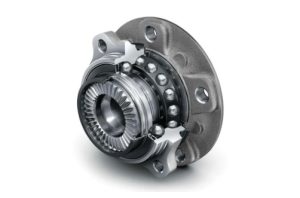When trying to shave seconds off your lap times, most drivers think about upgrading tires, brakes, coilovers, or engine tuning. But there’s one often overlooked component that can play a critical role in speed, consistency, and handling: your wheel hubs and bearings.
While they may seem like simple hardware, high-performance hubs and bearings can significantly influence how a car behaves under load, in corners, and during high-speed maneuvers. In this article, we’ll explore how these upgrades impact performance and whether they’re worth the investment for track enthusiasts.
Looking to upgrade? Buy Hub & Bearings online to get high-quality components designed for speed, endurance, and peak handling.
Wheel hubs and bearings are responsible for:
-
Connecting the wheels to the suspension and steering system
-
Supporting vertical and lateral loads during driving
-
Enabling smooth, low-friction wheel rotation
-
Transmitting torque from the drivetrain (in drive wheels)
In track driving, these components are subjected to extreme lateral G-forces, high speeds, and sudden braking and acceleration. Weak or worn bearings introduce flex, play, and drag, all of which degrade handling and speed.
Key Benefits of Performance Hubs & Bearings
| Benefit | How It Helps Lap Times |
|---|---|
| Reduced rolling resistance | Less energy loss means faster acceleration |
| Tighter tolerances | Improves steering precision and feedback |
| Better heat dissipation | Avoids performance fade during hot laps |
| Higher load capacity | Resists cornering deformation |
| Lightweight construction | Reduces unsprung weight, improving response |
Common Types of Performance Hubs and Bearings
| Type | Features | Best For |
|---|---|---|
| Chromoly or billet hubs | Stronger and lighter than cast OEM | Track and endurance racing |
| Angular contact bearings | Handle both radial and axial loads | High-speed cornering and braking |
| Sealed ceramic bearings | Low friction, heat resistant | Time attack, autocross, high-speed use |
| Double-row or oversized | Increased stiffness, load capacity | Rally, drifting, grip-focused racing |
How Upgraded Bearings Improve Lap Times
1. Improved Steering and Corner Entry
Precision-built bearings reduce play in the wheel, giving immediate feedback and tighter steering response. In fast corners or chicanes, this results in:
-
Earlier turn-in confidence
-
Less understeer due to less flex
-
Better weight transfer control
2. Reduced Friction = Better Acceleration
High-performance bearings often have:
-
Lower-friction seals or no seals at all (in motorsport settings)
-
Higher-grade materials like ceramic or chromoly
-
Precision machining for tighter tolerances
These factors reduce rotational drag, which can improve acceleration by tenths of a second over a lap.
3. Heat Resistance Under Load
OEM bearings often fail during endurance use because of:
-
High internal heat buildup
-
Grease breakdown
-
Seal deformation
Race-grade bearings dissipate heat better and withstand repeated heat cycles without degradation, ensuring consistent performance across sessions.
Signs You May Need a Performance Upgrade
| Symptom | Cause |
|---|---|
| Steering looseness mid-corner | Bearing play or worn hub splines |
| Noisy bearings under load | Grease failure, seal damage, worn races |
| Inconsistent lap times | Uneven friction or cornering behavior |
| Braking instability | Hub flex or bearing deflection |
When Performance Bearings Are a Must-Have
-
Track cars seeing regular lap time competition
-
Time attack builds chasing tenths of a second
-
Drift cars needing strong lateral load support
-
Endurance racing where heat and reliability are key
-
Lightweight builds aiming to reduce unsprung mass
DIY vs Professional Installation
Upgrading to performance hubs and bearings isn’t plug-and-play like some mods. Consider the following:
Pros of DIY Installation:
-
Save on labor costs
-
Opportunity to inspect related components (brakes, axles, control arms)
Risks:
-
Press-fit bearings can be tricky without proper tools
-
Incorrect torque spec or alignment can undo performance gains
Tools You’ll Likely Need:
-
Torque wrench
-
Bearing press or hub puller
-
Jack and jack stands
-
Anti-seize compound
-
Dial indicator (to measure end play if needed)
Maintenance Tips for Racing Bearings

-
Inspect after every track day: Look for play, noise, and uneven rotation
-
Use high-temp grease: If serviceable, use motorsport-grade lubricants
-
Avoid power washing near hubs: Moisture kills seals and grease
-
Replace in pairs: Always upgrade left and right together
Real-World Results
| Test Setup | OEM Bearings | Performance Bearings |
|---|---|---|
| Lap time on 2.1 km track | 1:47.5 | 1:45.9 (-1.6 sec) |
| Peak G-force cornering | 1.10 G | 1.17 G |
| Braking distance (100–0km/h) | 38.5 m | 37.1 m |
| Heat fade after 20 laps | Moderate | None observed |
Where to Get High-Performance Hubs & Bearings
Ready to upgrade your wheel hardware? Buy Hub & Bearings online — including track-ready options designed for strength, speed, and reliability. Choose from trusted brands and get a perfect fit for your performance build.
Final Thoughts
While they may not be the flashiest upgrade, performance hubs and bearings are foundational to a car’s track performance. If you’re chasing quicker lap times, more predictable handling, and improved durability under load, these are a smart investment.
By reducing friction, increasing precision, and resisting heat and stress, these components help maximize every other part of your build — tires, brakes, suspension, and power — so you can drive harder, longer, and faster.
Upgrade smart, drive sharper — and let your lap times prove the difference.
